I got into Jojo's Bizarre Adventure recently. And I was like:
"Where have you been all my life?"
'cuz I've been missing out! This show is clearly made for me. I love prog rock, I love weird anime, and Jojo is the "you got your chocolate in my peanut butter" of those two things.
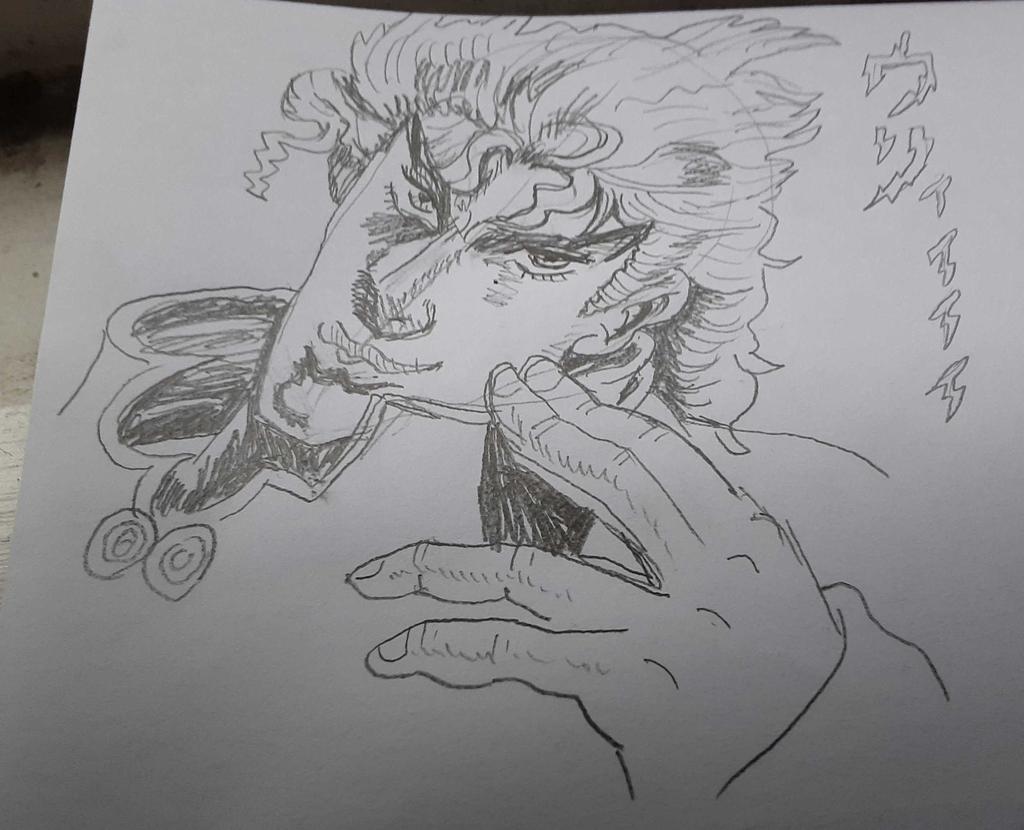
(Above: a doodle of Dio I did)
Reasons I'd been sleeping on this anime for years include:
- grotesque, gaudy art style (HUEG MUSCLES) was initially off-putting
- there's SO MUCH of it (the manga ran continuously from 1987 until this year)
- there wasn't an accessible adaptation until 2012 (25 years after the manga!)
- there's a ton of internet "memes" and they're all kind of dumb
- the little bit I had seen (from Phantom Blood) was only "pretty good"
- no obvious "hook".
Let me start with the last point. It's hard to explain to somebody why they'd enjoy JJBA, because what the heck is JJBA even about? I'd say "It's about Stands" but that leaves out the first two parts as Stands aren't invented til part 3. I'd say "it's about globe-trotting adventurers using implausible martial-arts techniques to fight super-powered vampires named after rock bands" but that only describes the first 3 parts.
Really, JJBA is a collection of 8 different stories, differing in time period, location, and even genre, united only by Araki's very distinctive style and the fact that all 8 protagonists are part of the same sprawling family. And they're all nicknamed "Jojo". Aside from that, anything goes.
That still doesn't explain why you'd wanna watch this thing though. One reason is if you're at all interested in the historical development of shonen battle manga: JJBA is incredibly influential on everything that came after it. One Piece, for example; a manga I was really into back in the day -- I never realized until now that One Piece is basically just Pirate Jojo. (With Devil Fruit powers as Stands).
But the main reason to watch JJBA is that it keeps its promise. That's how you make a story grab people, right? You promise them something and deliver it. The promise of JJBA -- right there in the title -- is that something completely ludicrous is going to happen at least once an episode. And it does.
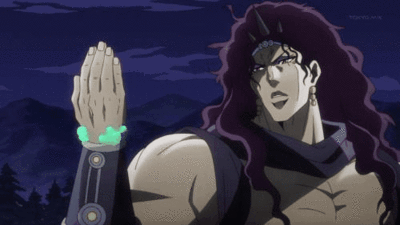
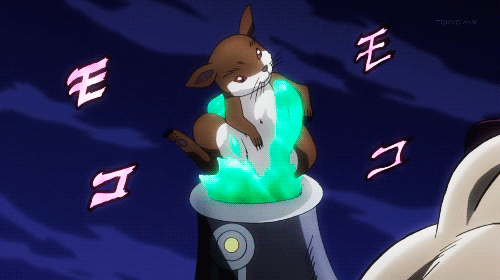
That's it! It's not complicated. It's a very simple pleasure! You get a constant stream of "WTF did I just watch?!?" moments. ("Holy shit, Santana just absorbed a vampire into his body, dislocated his skeleton to squeeze through a ventilation shaft, and then flew up a Nazi's nose and made him explode from the inside!").
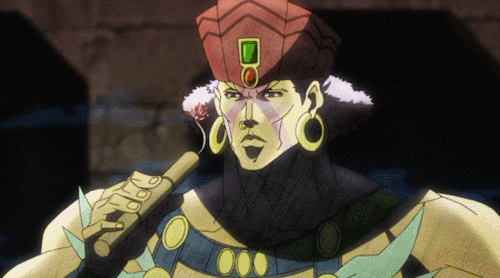
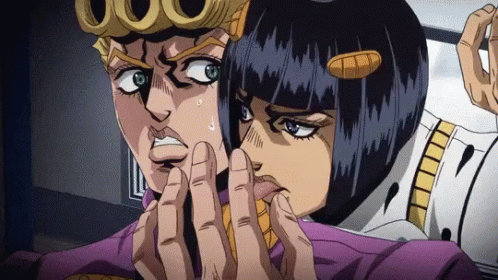

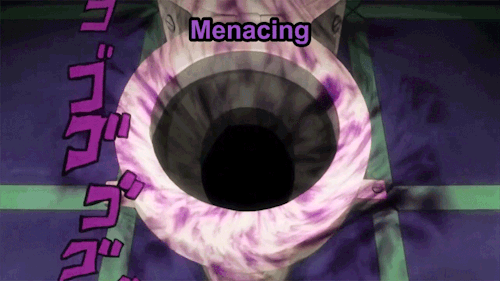
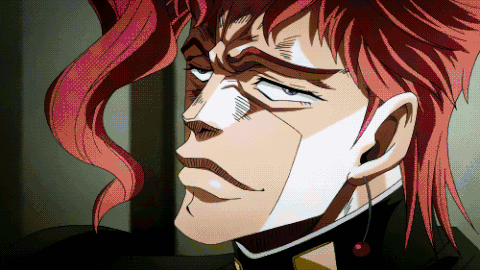
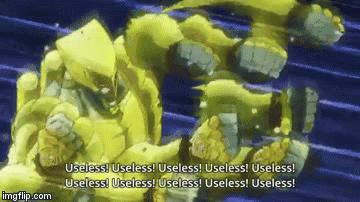
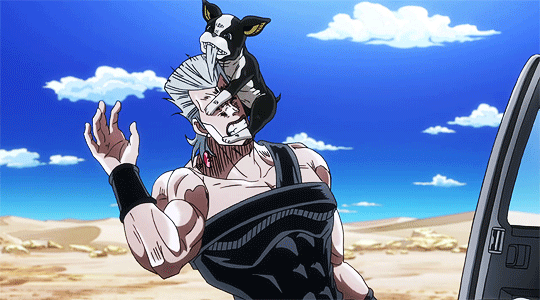
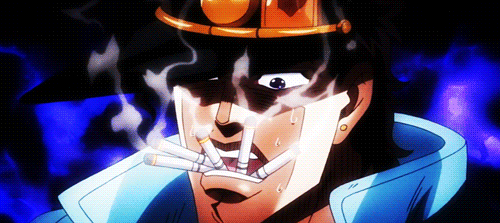
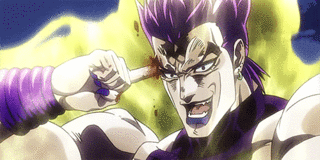
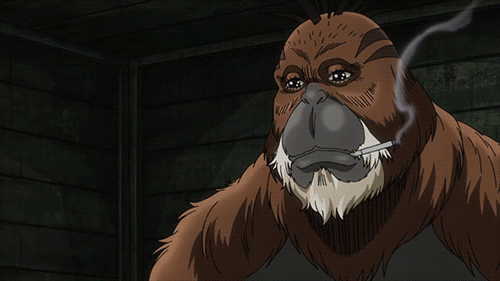
I've realized a lot of my favorite comics/comic-derived media have this quality in common, which is "if I describe the literal events of the plot to you, I sound like an insane person". Homestuck is like that, Achewood is like that, a lot of Osamu Tezuka stuff and Jack Kirby's Fourth World are like that...
As I've been trying to understand more about storytelling, I like to take stories apart and see what makes them work. JJBA is pulp fiction (literally, in terms of the paper quality it was printed on). Pulp fiction, being not particularly concerned with character depth or meaningful themes, lives or dies entirely on incident: whether the events the plot generate enough cheap thrills per minute. You keep watching to find out what batshit insane thing is going to happen next.
"Serious writers" look down on this sort of thing, but it strikes me that the pulp ethos is more core to storytelling than we'd like to admit. Ancient oral storytellers spellbinding an audience with epic poetry or whatever were probably doing something much closer to pulp than to the modern novel with all its interiority and psychological realism and whatever. That all comes later. It starts with pure, basic desire to find out what happens next. Pulp authors keep or lose an audience based on how well they execute the craft.
Some "weird for the sake of being weird" stories get paradoxically very boring quickly, because when anything can happen there's no particular reason to care; there's not enough sense of stakes or development, and trying to keep topping the previous spectacle hits diminishing returns fast.
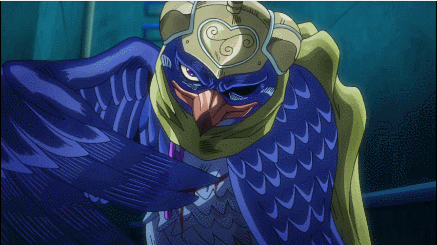
JJBA avoids this problem by keeping all the bizarre mayhem grounded in extremely clear goals, stakes, escalation, cause-and-effect, moves-and-countermoves, etc. the things people are doing are weird and crazy but you're always 100% clear on why people are doing them; they always make sense in that moment given the character's goals and the rules of the universe. It establishes rules and (mostly) sticks to them, letting you anticipate, and deduce, and wonder "how the heck will they get out of this one?"
Araki executes the fundamentals (setups/payoffs, escalation/reversal, tension/release, etc) so well that he can get you emotionally invested in a fight between Polnareff, a complete idiot with a stupid haircut, and a guy named Vanilla Ice whose power is to have his Stand eat itself, turning inside-out and forming an invisible sphere of annihilation... look, it's hard to explain, but it's harrowing, OK? It's the most emotionally devastating fight in the series. Vanilla Ice kicks the dog. I wanted to cry. I never wanted to see somebody get beaten so bad. FUCK that guy. His stand is named "Cream".
(Fucking Vanilla Ice. Man.)
OK, other random observations:
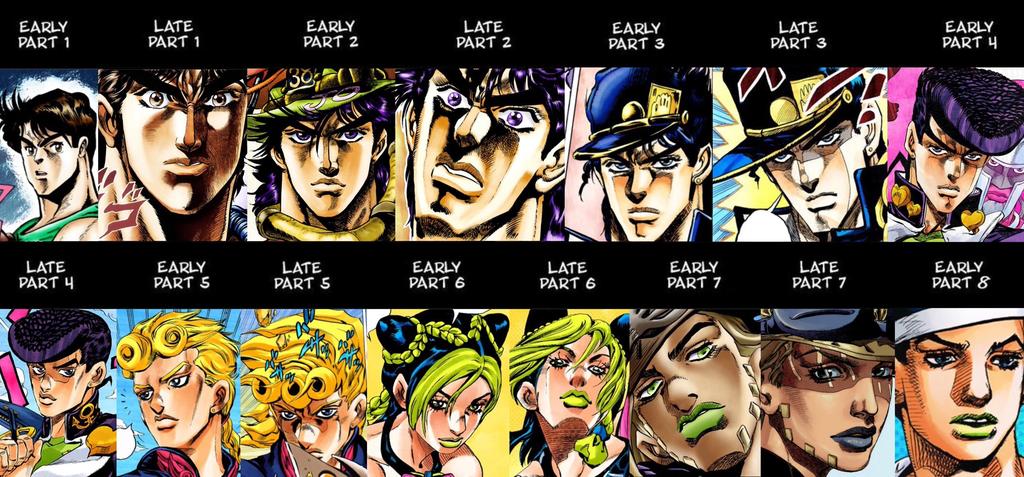
- I love the way the story evolves from one "Part" to the next. This is one of the great pleasures of getting into any of the really long-running serial fictions (Doctor Who, for another example). You get to see how each part reflects the time it was written, while tracing the evolution of Araki's art style (which starts at "Fist of the North Star" but continues getting softer and more emotionally expressive) and storytelling approach. The genre shifts from "Victorian vampire fight" to "Indiana Jones-style WW2 globetrotting archaeology adventure" to "Tarot-card-themed Stand battle-of-the-week" and next Part 4 looks like it's going to be "Quirky small town rocked by series of mysterious murders"
- One of the best bits for me is how the protagonist of part 2 becomes the mentor figure of part 3, and the protagonist of part 3 becomes the mentor figure of part 4. We don't typically get to see shonen heroes at different stages of their life. It's good character development that also makes the scope feel bigger and the world more connected.
- JJBA feels like it's more "engaged with the wider world" than most anime. It's in a dialogue with rock music, pulp fiction, the Pop Art movement, baroque Italian sculpture, vampire lore, american 80s movies, there's travel to exotic real-world locations... so much anime is only in dialogue with other anime so it feels very insular, where JJBA is expansive / intellectually omnivorous. You can tell Araki actually researches real locations for his settings.
- Everything's super INTENSE and heightened all the time, but also it's very self-aware and conscious of its own tropes (verging on self-parody), and able to switch seamlessly into slapstick humor at times. Araki has a way of cranking up the intensity until serious things turn silly, and then cranking it up some more so silly things become serious again.
- One reason I can't unreservedly recommend JJBA is that it's horrifically violent. Unlike most battle manga characters don't just shrug off damage. Human bodies are fragile in this show: almost every episode has blood squirting out of somebody, people get bones broken and body parts permanently chopped off; the violence frequently shades right into body horror. Basically everybody's one wrong move from dying at all times, so stakes are high and fights are dangerous.
- Another thing I can't recommend is the sexism of the early parts. Aside from Lisa Lisa, women only seem to exist as damsels-in-distress or occasional villains. It is very 1987. I hear it gets better later -- we finally get a female Jojo in part 6.
- Interesting how despite there being no textual gayness, the "gaze" is extremely gay, like, men are constantly making sexy poses, wearing shirts with "boob windows" to show off their muscles, etc. Combined with the above, it's almost like Araki is so into drawing hot guys that he sort of forgets that women exist for chapters at a time.
- It made me realize the essence of shonen storytelling is all about building up an immovable force versus an indestructable object. You establish that the villain is completely unbeatable and also establish that the hero absolutely has to beat them anyway, and you keep cranking up both sides of that equation, and the audience keeps watching to find out how the apparent paradox will be resolved. It's a very simple and effective engine.
- Speaking of "paradox", there was a moment that -- OK so there's two brothers named Oingo and Boingo, who have a magic comic book (that is somehow the Egyptian god Thoth) that tells the future (just roll with it) and I started thinking "why do storytellers love prophecy as a plot device? The audience knows Jojo's not gonna die even if Thoth predicts him dying and the prediction is supposedly absolute". And I realized that the unbreakable prophecy does the same thing as the invincible villain: creating a "fixed point" that generates tension against the fact that the audience knows the hero is going to win. The tension is not so much "will Jojo die?" as "how will the writer square this circle?" It's much like seeing a magic trick and knowing you're getting tricked but not knowing how. Anyway I think this gets at important storytelling principle.

